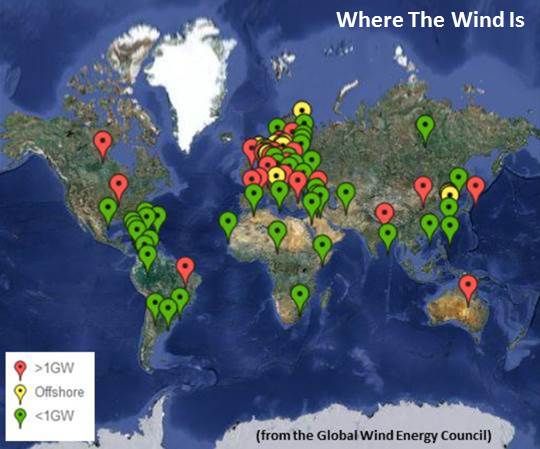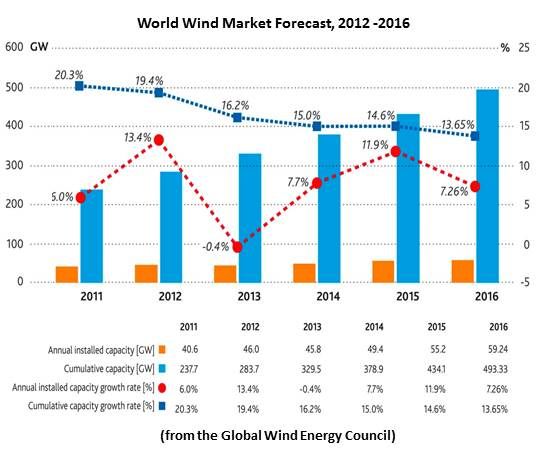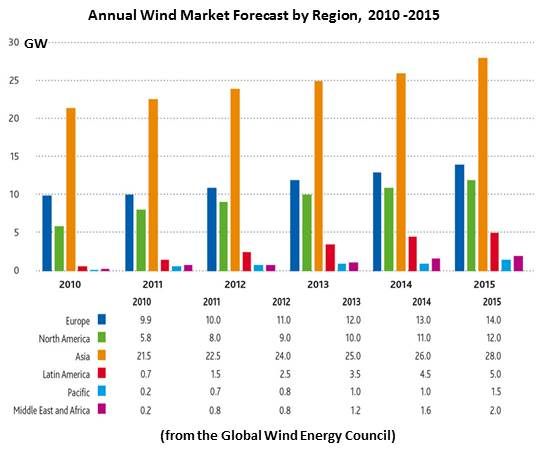“Historians will look back on the period from 2005 to 2009 as the golden age of renewable energy financing,” said Global Wind Energy Council Secretary General Steve Sawyer. “But it is gone and it will not come again.”
It's not an entirely bad thing, Sawyer said, because “it will drive the industry to new, longer-term, lower-cost, more patient sources of capital.”
Sawyer expects bond issues, pension funds and state-backed investment funds to play a bigger role in wind as multinational private equity, made cautious by the recent economic turmoil and limited by regulatory reform, steps back.
“Developers can maybe walk into a private bank in Germany, the U.S. or Canada and get a non-recourse loan,” Sawyer said, “but in very few other places.”
There is not a lack of money, Sawyer said, ticking off a list of new players around the world who are looking for the right time and place to put their money to work in wind.
All but one of the wind projects in Brazil’s recent auctions were funded by the Brazilian Development Bank (BNDES), he said.
In China, wind projects are not government-funded, but the big developers are financed by the China Development Bank and a handful of other central-government-backed banks.
The Indian Renewable Energy Development Agency (IREDA) plays a big role in wind development in India.
In Europe, much of the move offshore has been backed by the European Bank for Reconstruction and Development (EDRD). The International Finance Corporation (IFC) has a billion dollars invested in the wind sector, Sawyer said.
And the InterAmerican Development Bank has invested heavily in Central and South America, he added, especially in some of the smaller markets like Uruguay, Peru, Costa Rica, Nicaragua, Honduras and Panama.

Sawyer described three different ways wind projects are being financed in three of the newer but very different markets.
The huge costs of European offshore wind projects may be funded in stages, he explained. Dong and EON used their balance sheets to fund a big part of the London Array, which at 670 megawatts in phase one will be the world’s biggest offshore wind project. But even those deep-pocketed utilities found their balance sheets challenged.
Shell took an interest in the project, hoping to leverage its ocean energy experience. When it backed out, Masdar stepped in to take on EON’s share. Later, the European Investment Bank and the Danish Export Credit Fund provided further backing.
With steel now in the seabed and power coming ashore from the London Array, Sawyer said, Dong has been able to sell off half of its half interest to a pension fund which, though characteristically risk-averse, nevertheless sees the project as a secure long-term investment.
In the quickly emerging Brazilian market, Sawyer said, developers must meet most of the BNDES loan requirements just to participate in the state-run auction. Winning bidders are essentially pre-qualified for 80 percent funding from the bank.
“The developer has to come up with 20 percent equity financing,” Sawyer said, "but with BNDES backing, they can usually be confident of getting it either through their own balance sheet or from wind industry investors.”
Wind development in South Africa is “brand new,” Sawyer said. Following an auction, “The first PPAs were awarded just last November and the first projects just broke ground in the last few weeks.”
Commercial finance is limited, Sawyer said. “The lion’s share of equity funding is through a combination of international institutions, like the IFC and the EIB, and international investment funds, like MacQuarrie and Global Equity.”
Most major international players have not yet come in. One smaller South African developer has partnered with Ireland’s Mainstream Renewable Power. Another has partnered with the UK’s RES. Others have obtained credit guarantees from export credit agencies.
“South Africa should be a big market,” Sawyer said. “It is a growing economy. They need the power. They need the jobs. And they want the investments.” The initial auction rounds account for about 3.5 gigawatts, and “if the industry starts to move, they will end up with a lot more than 10 gigawatts because they really need the power and they are actively encouraging investment from any and all quarters.”

The overall trend, Sawyer said, is toward “the financing you normally see with big power projects like dams and gas and coal plants that provide longer-term, lower-cost capital.” But, he said, “you don’t get the opportunities for community-scale wind farm financing through those large multilateral agencies.”
Sawyer is hopeful that “the new financiers will come up with some kind of project bundling or local development banks that can make long-term, low-cost financing available for the smaller, 10-megawatt to 30-megawatt projects around small communities in places like the northeast U.S. or northern Germany or, increasingly, central China.”
Community wind has become viable, Sawyer said, because of technological innovations allowing for turbines with taller towers and bigger rotors that can economically capture lower-speed Class Two and Class Three winds in places that are closer to population centers, have transmission and distribution infrastructure, and higher electricity rates.




